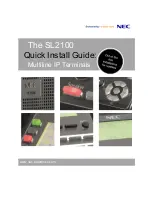
BGS2T AT Command Set
3.3 AT^SIND
BGS2T_ATC_V01.301
Page 73 of 554
1/31/12
c
local Time Zone (TZ), Daylight Saving Time (DST). All information elements of
MMI/GMMI are optional and therefore, the presentation of the parameters
varies with the network. For example, the
network may send all three parameters UT, TZ, DST, or only UT and TZ or only
TZ.
UT is indicated in usual date/time format and represents the current world time
(GMT) at the moment when sent.
TZ is given as a positive (east) or negative (west) offset from UT in units of 15
minutes.
DST shows the number of hours added to the local TZ because of daylight sav-
ing time (summertime) adjustment. Usually DST is 1 hour but it can be also 2
hours in certain locations.
Example for time and time zone with DST:
+CIEV: nitz,"04/07/23,13:39:20",-28,1
In this example TZ is -28, showing a time offset of -7 hours (west) to Universal
Time/GMT (which never changes for DST). DST is 1 which indicates that one
hour was added to TZ because of Daylight Saving Time. If a network does not
send the DST parameter the TZ value would be -32 (8 hours west) as would
be done in winter:
+CIEV: nitz,"04/11/23,13:39:20",-32
Please be aware that despite the last NITZ value can be looked up again via
"AT^SIND=nitz,2" the returned values may be out of date. Especially the UT
value is obsolete because there is no internal NITZ clock and therefore no con-
tinuation of UT.
NITZ values are lost when the ME detaches from network. Also when a manual
network selection fails and the ME automatically falls back to the previous net-
work the NITZ values cannot be recalled. Nevertheless an indicated time zone
is valid until a new MMI/GMMI will trigger another NITZ indication.
Integer type value in the range stated above for the corresponding
Notes specific to EONS feature:
If indicator is "eons",
is a type associated to the operator name according to 3GPP TS 22.101
. This type depends on the source of the operator name.
Priority of types associated to the operator names is defined as follows (the type listed first has the highest pri-
ority). If a type cannot be indicated the next one will be used.
If the type is 2, 4 or 5,
with the appropriate
displays the same operator name.
0
Indicator is deregistered, i.e. no such indicator event report (URC) will be
issued.
=0 is power-up and factory default of indicators defined by
only.
<indValue>
(num)
0
Not registered.
1
EF
OPL
and EF
PNN
(alphanumeric format, can contain up to 24 characters.)
2
Operator Name String in long and short format according to Common PCN
Handset Specification (CPHS)
(alphanumeric format, can contain up to 16
characters).
3
Name information received by the NITZ service long and short form (alphanu-
meric format, can contain up to 16 characters). The short form will be displayed
only if EF
OPShort
from CPHS is available.
4
Any operator name stored internal to the ME (alphanumeric format, can con-
tain up to 16 characters).
5
Broadcast MCC-MNC (numeric format which consists of a 3-digit country code
plus a 2- or 3-digit network code).
<mode>
(num)
Confidential / Released
















































